
Agios Tychonas: The Serene Coastal Gem of Limassol
Discover Agios Tychonas in Limassol: a blend of ancient ruins, pristine beaches, and luxurious resorts, offering a serene escape on the southern coast of Cyprus.
Agios Tychonas, nestled along the southern coast of Cyprus, is a captivating blend of ancient history and contemporary charm. This picturesque neighbourhood, part of the vibrant city of Limassol, offers a unique glimpse into both the island's past and its modern-day allure. Here, golden sandy beaches meet azure waters, providing a perfect backdrop for relaxation and leisure. Wander through the narrow streets of the village to discover authentic Cypriot architecture, charming local tavernas, and a welcoming community spirit. The area is known for its rich archaeological heritage, with the ancient Amathus ruins just a stone's throw away. These ruins, dating back to 1100 BC, are a testament to the region's historical significance and offer a fascinating exploration opportunity for history enthusiasts. For those seeking more modern pleasures, Agios Tychonas boasts a range of luxurious resorts and spas, making it an ideal destination for indulgence and unwinding. The neighbourhood's coastline is dotted with chic beach bars and restaurants, where visitors can enjoy fresh seafood and stunning sea views. Whether you're here to immerse yourself in history, bask in the sun, or savour the local cuisine, Agios Tychonas promises an unforgettable experience.
Local tips in Agios Tychonas
- Visit the Amathus ruins early in the morning to avoid the crowds and enjoy a cooler climate.
- Try the local seafood at one of the beachside tavernas for an authentic taste of Cypriot cuisine.
- Bring comfortable walking shoes for exploring the archaeological sites and village streets.
- Book a spa treatment at one of the luxury hotels for a relaxing end to your day.
- Check the local calendar for cultural events or festivals happening during your visit.
Agios Tychonas: The Serene Coastal Gem of Limassol
Agios Tychonas, nestled along the southern coast of Cyprus, is a captivating blend of ancient history and contemporary charm. This picturesque neighbourhood, part of the vibrant city of Limassol, offers a unique glimpse into both the island's past and its modern-day allure. Here, golden sandy beaches meet azure waters, providing a perfect backdrop for relaxation and leisure. Wander through the narrow streets of the village to discover authentic Cypriot architecture, charming local tavernas, and a welcoming community spirit. The area is known for its rich archaeological heritage, with the ancient Amathus ruins just a stone's throw away. These ruins, dating back to 1100 BC, are a testament to the region's historical significance and offer a fascinating exploration opportunity for history enthusiasts. For those seeking more modern pleasures, Agios Tychonas boasts a range of luxurious resorts and spas, making it an ideal destination for indulgence and unwinding. The neighbourhood's coastline is dotted with chic beach bars and restaurants, where visitors can enjoy fresh seafood and stunning sea views. Whether you're here to immerse yourself in history, bask in the sun, or savour the local cuisine, Agios Tychonas promises an unforgettable experience.
Iconic landmarks you can’t miss
Archaeological Site of Amathous
Discover the mesmerizing Archaeological Site of Amathous, a historical gem on Cyprus' coast showcasing ancient ruins and breathtaking views.
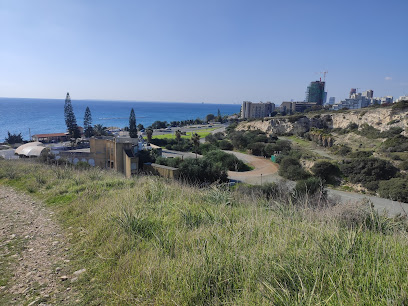
Ancient Amathunta
Explore the majestic ruins of Ancient Amathunta, a historical landmark in Cyprus that reveals the secrets of its ancient civilization amidst stunning coastal views.
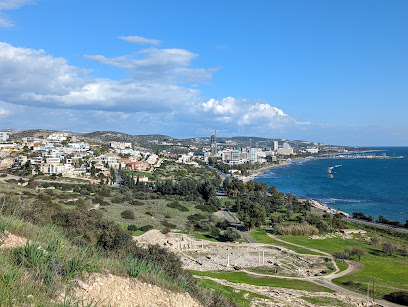
Best view of Limassol
Discover the Best View of Limassol, where breathtaking vistas of the Mediterranean and rich history await every traveler in Cyprus.

Promenada Agios Tychonas
Discover the breathtaking hiking trails of Promenada Agios Tychonas in Limassol, Cyprus, and immerse yourself in nature's beauty and tranquility.
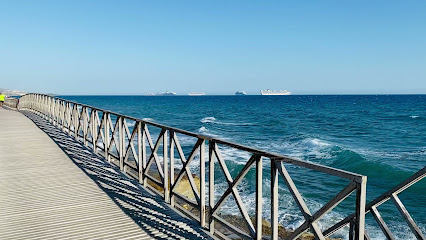
Εκκλησία Άγιου Τύχωνα
Discover the serene beauty and rich history of the Church of Agios Tychonas, a must-visit Greek Orthodox sanctuary in Cyprus's captivating landscape.
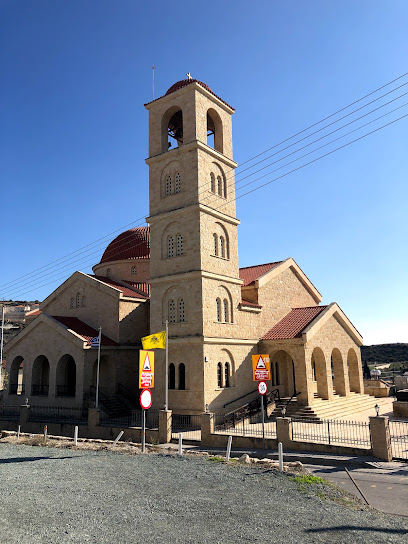
Agios Tychon Beach
Discover the serene beauty of Agios Tychon Beach in Cyprus – a perfect blend of relaxation, adventure, and delicious local cuisine.
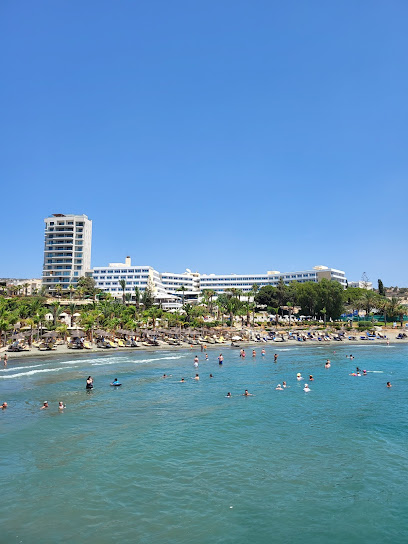
Agios Tychon
Experience the charm and tranquility of Agios Tychon Manor, a perfect blend of history and luxury on the stunning Cyprus coastline.
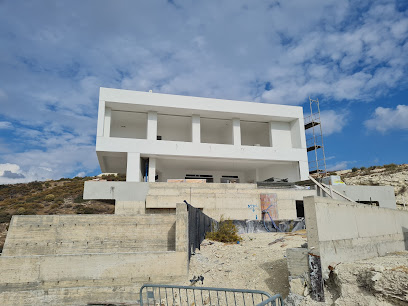
View point
Experience the stunning vistas of Limassol at the premier view point, where every angle offers breathtaking beauty and unforgettable memories.
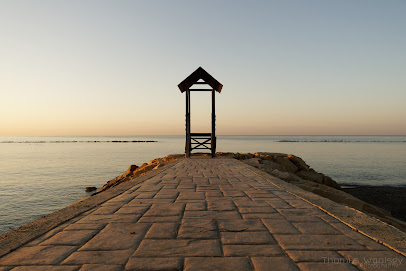
Fountain of the Good Samaritan
Experience the beauty and history of Limassol at the Fountain of the Good Samaritan, a serene landmark symbolizing kindness and community.
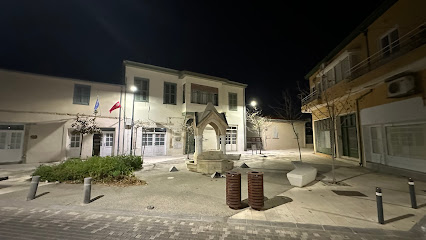
Agios Tychonas beach ⛱️
Discover the tranquil beauty of Agios Tychonas Beach, where golden sands and azure waters create a serene escape in Cyprus.

ARISTOTELOUS STREET
Explore the lush gardens and cultural charm of Aristotelous Street in Agios Tychon, a serene haven perfect for nature lovers and relaxation seekers.

Unmissable attractions to see
Limassol Municipal Garden
Experience the natural beauty and tranquility of Limassol Municipal Garden, a lush park perfect for relaxation, family outings, and enjoying the vibrant flora of Cyprus.
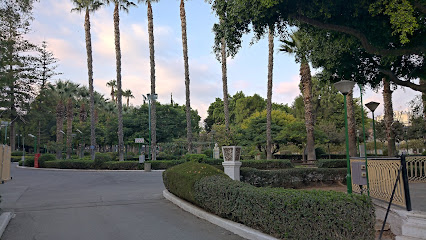
Municipal Zoo
Experience the charm of Limassol Zoo, a family-friendly attraction showcasing diverse wildlife and promoting conservation in a beautiful setting.
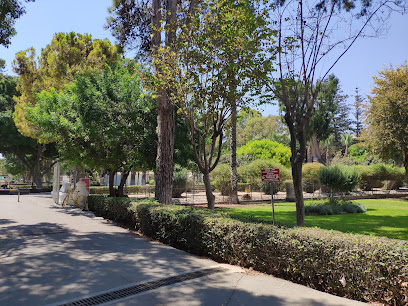
Archaeological Site of Amathous
Explore the Archaeological Site of Amathous, where rich history meets breathtaking Mediterranean views in the heart of Cyprus.
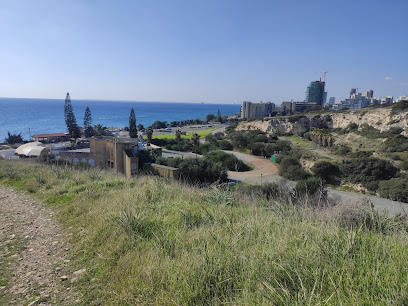
Best view of Limassol
Discover the unrivaled views of Limassol from Agios Tychon, where stunning landscapes and historical landmarks come together in perfect harmony.
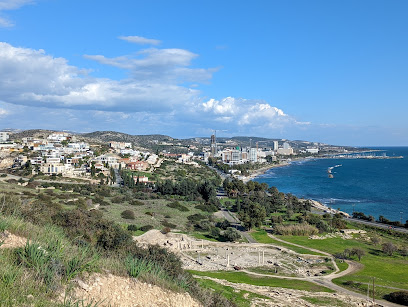
Poseidonia Watersports
Explore the thrilling aquatic adventures at Poseidonia Watersports in Cypriot paradise, perfect for all ages and skill levels.
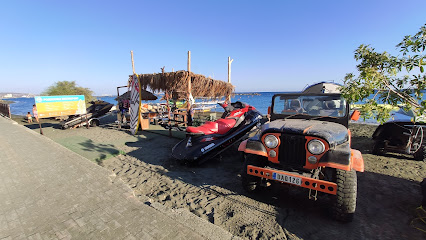
Infinitude Beach
Experience the tranquility of Infinitude Beach in Agios Tychon, Cyprus, a stunning destination for relaxation and exploration by the Mediterranean Sea.

View point
Discover the stunning Agios Tychon viewpoint, where breathtaking Mediterranean vistas await every traveler seeking beauty and tranquility.
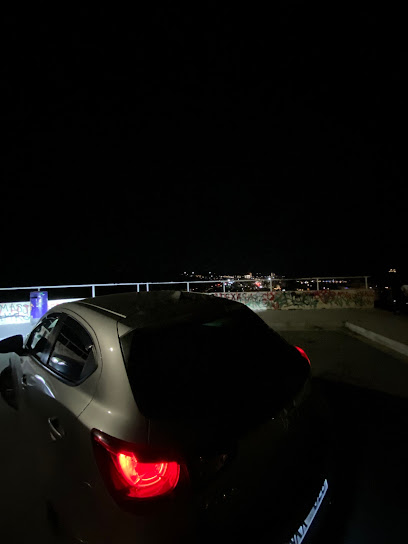
Limassol in sunset
Experience the breathtaking beauty of Limassol during sunset, where vibrant colors meet the Mediterranean Sea for an unforgettable coastal escape.

Amathounta ancient port
Explore the serene Amathounta ancient port in Agios Tychon, Cyprus, where history meets stunning Mediterranean views.
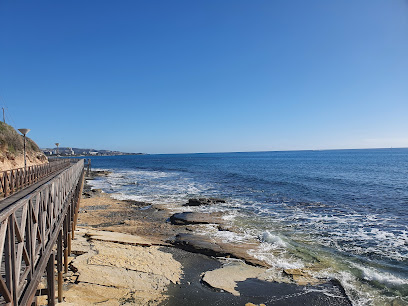
The cats home living area
Experience the warmth and joy of The Cats Home in Agios Tychon, Cyprus, where furry friends await in a cozy sanctuary, perfect for all animal lovers.

Armonia Plastic Free Beach
Experience the beauty of Armonia Plastic Free Beach, a sustainable paradise in Agios Tychon, Cyprus, where relaxation meets environmental responsibility.

Essential places to dine
Old-Limassol
Savor fresh seafood at Old-Limassol in Agios Tychon - where Mediterranean flavors meet stunning sea views.

Nama Restaurant
Experience authentic Cypriot cuisine at Nama Restaurant in Agios Tychon – where tradition meets contemporary dining.
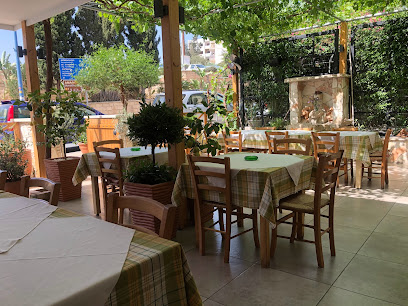
Danae Tavern
Experience authentic Cypriot cuisine at Danae Tavern in Limassol - where tradition meets flavor in every dish.
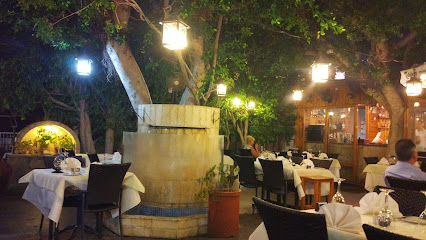
Ταβέρνα Σαλώμη
Savor authentic Cypriot flavors at Ταβέρνα Σαλώμη in Agios Tychon - where tradition meets taste.
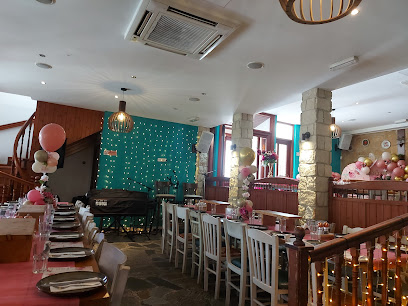
Venezia Tavern
Discover authentic Cypriot cuisine with stunning sea views at Venezia Tavern in Agios Tychon.
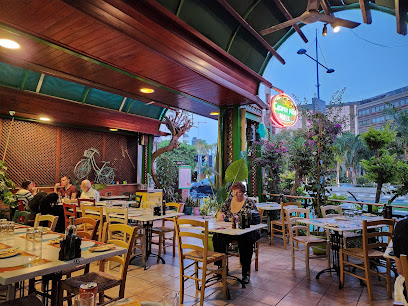
Τα Τρία Αλώνια - Ta Tria Alonia Tavern
Experience authentic Greek flavors at Ta Tria Alonia Tavern in Agios Tychon - a true culinary delight in Cyprus.
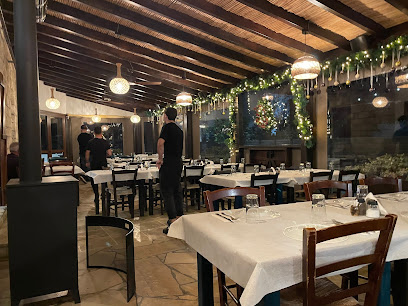
Ama Beach
Discover culinary bliss at Ama Beach – where delicious cuisine meets stunning Mediterranean views in Agios Tychon.
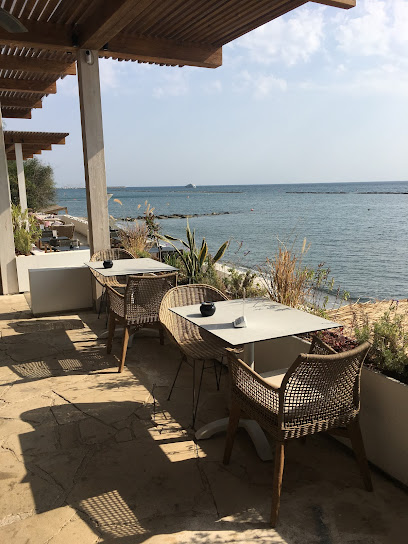
Gulya's Restaurant & Bar
Experience authentic Russian and Uzbek cuisine at Gulya's Restaurant & Bar in Agios Tychon – a culinary journey through Eastern Europe awaits!
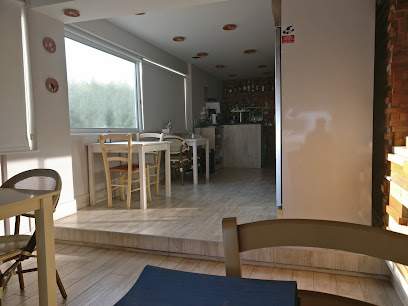
Franx Bar and Restaurant
Experience culinary delights at Franx Bar and Restaurant in Agios Tychon - where great food meets vibrant nightlife by Limassol Bay.
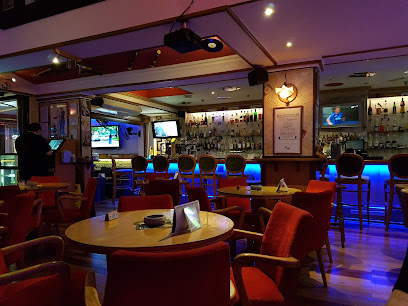
Asomos
Savor the essence of Greece at Asomos in Agios Tychon - a culinary haven for lovers of authentic Greek cuisine.

Markets, malls and hidden boutiques
First Boutique
Explore First Boutique in Limassol, Cyprus, for exclusive clothing selections that blend style, quality, and local flair.
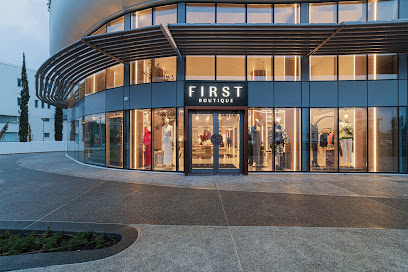
Fullah Sugah | Woman Brand Shopping Limassol
Discover the latest in women's fashion and accessories at Fullah Sugah, Limassol's premier boutique for stylish shoppers.

LEPUS Gift Shop - Agiou Andreou
Explore the vibrant LEPUS Gift Shop in Limassol for unique souvenirs, handcrafted treasures, and a taste of Cyprus culture.
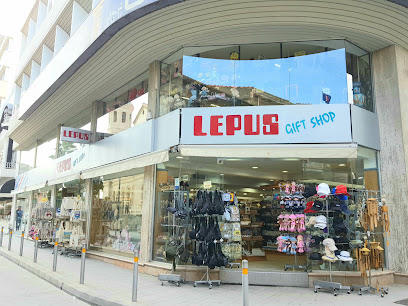
Minimalistic boutique
Explore the unique shopping experience at Minimalistic Boutique in Limassol, where contemporary design meets local craftsmanship.
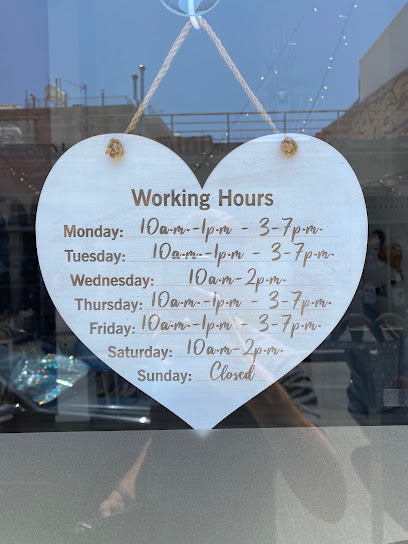
Status Boutique Limassol
Explore contemporary men's fashion at Status Boutique Limassol, where style meets comfort in the heart of Cyprus.

Hawana Gift Boutique Limassol
Explore the charm of Cyprus at Hawana Gift Boutique, your destination for unique gifts, local delicacies, and cultural treasures in Limassol.
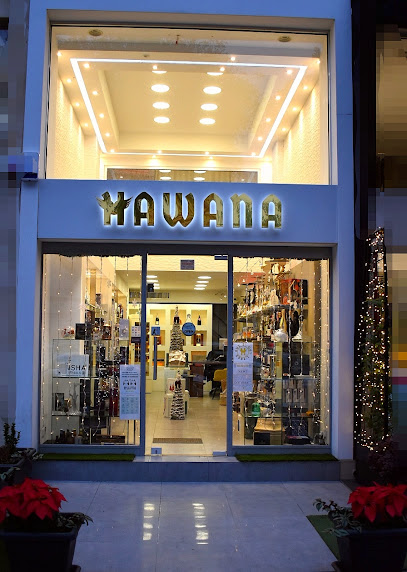
First Boutique Parklane Resort & Spa
Experience unparalleled luxury and tranquility at First Boutique Parklane Resort & Spa, a premier destination in Limassol, Cyprus.

Window Boutique Limassol
Explore the stylish offerings of Window Boutique Limassol, where local fashion meets contemporary trends in a chic shopping atmosphere.

The Sunshine Boutique
Discover stylish women's clothing and accessories at The Sunshine Boutique in Limassol, where fashion meets personalized service in a vibrant atmosphere.

LeRoi boutique
Discover unique fashion finds at LeRoi Boutique in Agios Tychon, where Cypriot style meets contemporary elegance.
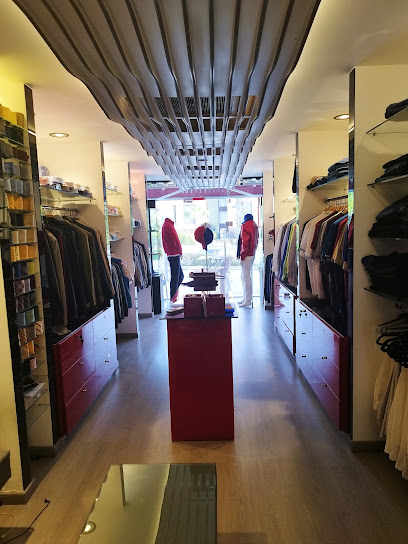
Essential bars & hidden hideouts
PlusSea
Experience the blend of beachside relaxation and gourmet dining at PlusSea in Agios Tychon, Cyprus, with stunning Mediterranean views.
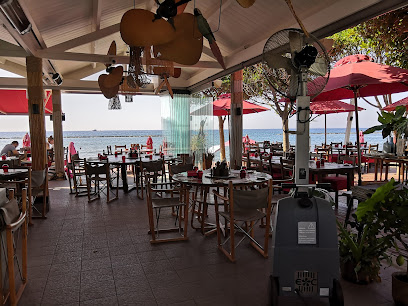
Trippers Bar
Experience the vibrant nightlife at Trippers Bar in Agios Tychon, Cyprus, where great drinks and a lively atmosphere await.
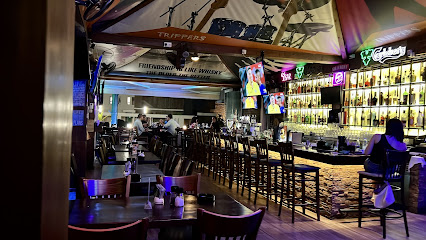
Ama Beach
Experience the best of Cyprus at Ama Beach, where exquisite breakfasts meet refreshing cocktails in a stunning coastal setting.
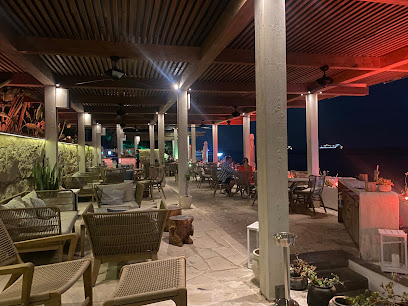
Sash Shisha
Experience the vibrant nightlife of Agios Tychon at Sash Shisha, where delicious burgers and relaxing hookah create the perfect evening escape.
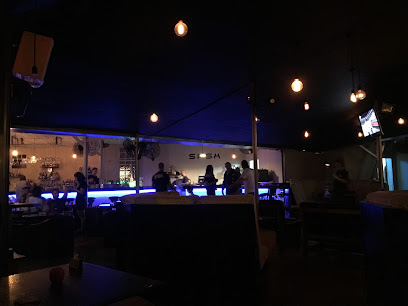
Gerrard's Kitchen Bar
Discover the vibrant flavors of Cyprus at Gerrard's Kitchen Bar, where local cuisine meets a lively atmosphere in Agios Tychon.
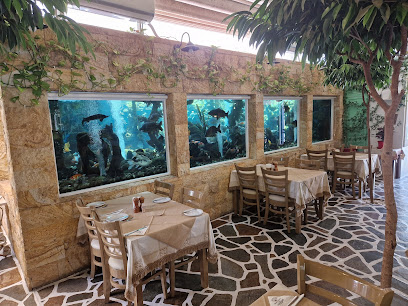
Franx Bar and Restaurant
Experience the vibrant atmosphere and exquisite dining at Franx Bar and Restaurant, the perfect spot for tourists in Limassol Bay.
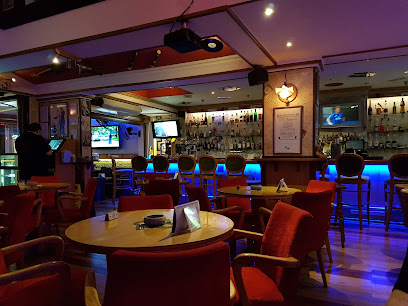
BeerDome96
Discover the lively atmosphere of BeerDome96 in Agios Tychon, Cyprus, where great drinks and friendly vibes await every visitor.
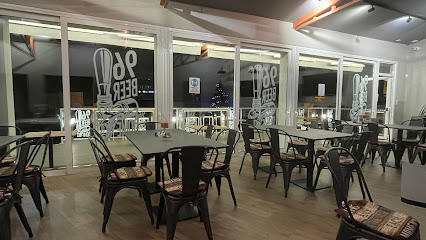
Booms karaoke bar
Experience the vibrant nightlife at Booms Karaoke Bar in Agios Tychon, Cyprus, where singing, fun, and camaraderie come together for unforgettable evenings.

Vista Bar
Experience luxury at Vista Bar in Agios Tychon, Cyprus, where exquisite cocktails and stunning views create the perfect retreat for relaxation.
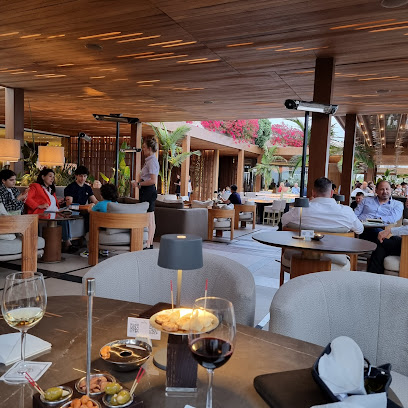
Be One Bar
Discover the vibrant cocktail culture at Be One Bar in Agios Tychon, where exquisite drinks meet stunning Mediterranean views.

Local Phrases
-
- HelloΓεια σας
[Yia sas] - GoodbyeΑντίο
[Adio] - YesΝαι
[Ne] - NoΌχι
[Ochi] - Please/You're welcomeΠαρακαλώ
[Parakalo] - Thank youΕυχαριστώ
[Efharisto] - Excuse me/SorryΣυγνώμη
[Signomi] - How are you?Πώς είσαι;
[Pos ise;] - Fine. And you?Καλά. Εσύ;
[Kala. Esi;] - Do you speak English?Μιλάς Αγγλικά;
[Milas Anglika;] - I don't understandΔεν καταλαβαίνω
[Den katalavaino]
- HelloΓεια σας
-
- I'd like to see the menu, pleaseΘα ήθελα να δω το μενού, παρακαλώ
[Tha ithela na do to menu, parakalo] - I don't eat meatΔεν τρώω κρέας
[Den troo kreas] - Cheers!ΥΓΕΙΑ!
[Yia!] - I would like to pay, pleaseΘα ήθελα να πληρώσω, παρακαλώ
[Tha ithela na plirosso, parakalo]
- I'd like to see the menu, pleaseΘα ήθελα να δω το μενού, παρακαλώ
-
- Help!Βοήθεια!
[Voithia!] - Go away!Πήγαινε!
[Pigaine!] - Call the Police!Καλέστε την Αστυνομία!
[Kaleste tin Astinomia!] - Call a doctor!Καλέστε γιατρό!
[Kaleste giatro!] - I'm lostΈχω χαθεί
[Eho hathi] - I'm illΕίμαι άρρωστος
[Ime arrostos]
- Help!Βοήθεια!
-
- I'd like to buy...Θα ήθελα να αγοράσω...
[Tha ithela na agoraso...] - I'm just lookingΑπλά κοιτάω
[Apla kitao] - How much is it?Πόσο κοστίζει;
[Poso kostizi;] - That's too expensiveΑυτό είναι πολύ ακριβό
[Afto ine poli akribo] - Can you lower the price?Μπορείτε να μειώσετε την τιμή;
[Borite na meiosete tin timi;]
- I'd like to buy...Θα ήθελα να αγοράσω...
-
- What time is it?Τι ώρα είναι;
[Ti ora ine;] - It's one o'clockΕίναι μία ώρα
[Ine mia ora] - Half past (10)Μισή (10)
[Misi (deka)] - MorningΠρωί
[Proi] - AfternoonΑπόγευμα
[Apogevma] - EveningΒράδυ
[Vradi] - YesterdayΧθες
[Hthes] - TodayΣήμερα
[Simera] - TomorrowΑύριο
[Avrio] - 1Ένα
[Ena] - 2Δύο
[Dyo] - 3Τρία
[Tría] - 4Τέσσερα
[Téssera] - 5Πέντε
[Pénte] - 6Έξι
[Éxi] - 7Επτά
[Eptá] - 8Οκτώ
[Októ] - 9Εννιά
[Enniá] - 10Δέκα
[Deka]
- What time is it?Τι ώρα είναι;
-
- Where's a/the...?Πού είναι ένα/το...;
[Pou ine ena/to...;] - What's the address?Ποια είναι η διεύθυνση;
[Pia ine i diefthinsi;] - Can you show me (on the map)?Μπορείτε να μου δείξετε (στο χάρτη);
[Borite na mou dixete (sto charti);] - When's the next (bus)?Πότε είναι το επόμενο (λεωφορείο);
[Pote ine to epomeno (leoforeio);] - A ticket (to ....)Ένα εισιτήριο (προς ....)
[Ena isitirio (pros ....)]
- Where's a/the...?Πού είναι ένα/το...;
History of Agios Tychonas
-
Agios Tychonas, a village located just east of Limassol, boasts a rich history that dates back to ancient times. The area is believed to have been inhabited since the Bronze Age, with archaeological evidence suggesting that it was a part of the ancient city of Amathus. This coastal region served as a vital trade hub, connecting various civilizations of the Mediterranean, thus laying the groundwork for the cultural diversity that characterizes Agios Tychonas today.
-
During the Byzantine period, Agios Tychonas emerged as a significant ecclesiastical center. The village is home to the Church of Agios Tychonas, which dates back to the 10th century and is dedicated to the patron saint of the area. The church's architecture reflects Byzantine influences, and it is adorned with remarkable frescoes. The site served as a religious focal point during the Crusades, attracting pilgrims traveling to Jerusalem and contributing to the village's growing reputation.
-
The Ottoman period (1571-1878) brought significant changes to Agios Tychonas. This era saw a flourishing of local culture and architecture, as the Ottomans encouraged the construction of mosques and public buildings. The village's strategic location made it a critical point for trade and agriculture, allowing it to develop economically. The coexistence of different religious communities during this time laid the foundation for the diverse cultural tapestry that still defines the area.
-
Following Cyprus's independence in 1960, Agios Tychonas underwent rapid modernization, evolving from a traditional village into a vibrant residential community. The influx of tourists and expatriates drawn to Limassol's coastal allure led to the development of new infrastructure and amenities. The village's proximity to the coastline has made it a popular destination for both locals and visitors, with various restaurants, hotels, and entertainment options emerging along its shores.
-
Today, Agios Tychonas stands as a testament to the rich historical and cultural legacy of Limassol. The village seamlessly blends traditional Cypriot life with modern influences, maintaining its charm while catering to contemporary demands. Events celebrating local culture and heritage continue to thrive, and the community remains active in preserving its historical sites, including the ancient ruins that hint at the area's storied past. This unique fusion of old and new encapsulates the spirit of Agios Tychonas within the broader context of Limassol's vibrant history.
Agios Tychonas Essentials
-
Agios Tychonas is easily accessible from other neighborhoods in Limassol. If you're traveling from the city center, you can take a local bus (routes 30 or 31) that runs frequently, or opt for a taxi, which is a convenient but more expensive option. For those arriving from Larnaca International Airport, consider taking a shuttle bus or arranging a private transfer, as it is approximately 65 kilometers away.
-
Agios Tychonas is relatively small, making it ideal for walking. Local buses are available for longer distances or to reach nearby attractions. Taxis can be hailed or booked via apps like Bolt or Uber. Bicycles can be rented from local shops, providing a leisurely way to explore the coastal promenade and nearby beaches.
-
Agios Tychonas is generally a safe area for tourists, but standard precautions should be taken. Avoid walking alone late at night in poorly lit areas. While there are no specific high-crime areas targeting tourists, it's advisable to stay vigilant in crowded places and keep personal belongings secure.
-
In case of emergency, dial 112 for police, fire, or medical assistance. The local hospital is accessible, and pharmacies are available for minor health issues. It’s advisable to have travel insurance that covers medical emergencies. Keep a list of local emergency contacts handy.
-
Fashion: Do wear light, breathable clothing given the warm climate, but avoid overly revealing attire, especially near religious sites. Religion: Do respect local customs by dressing modestly when visiting churches. Public Transport: Do give up your seat for elderly passengers. Don't eat or drink on public transport. Greetings: Do greet locals with a friendly smile and a handshake. Eating & Drinking: Do try the local cuisine and accept food offerings politely. Don't refuse hospitality, as it may be considered impolite.
-
To experience Agios Tychonas like a local, explore the charming village center where you can find traditional Cypriot tavernas and local shops. Visit the nearby beaches early in the morning for a quieter experience. Engage with local residents, who are often welcoming and happy to share stories. If you have the chance, partake in local festivals or events to immerse yourself in the community culture.
Nearby Cities to Agios Tychonas
-
Things To Do in Troodos
-
Things To Do in Pissouri
-
Things To Do in Larnaca
-
Things To Do in Nicosia
-
Things To Do in Kyrenia
-
Things To Do in Paphos
-
Things To Do in Kato Paphos
-
Things To Do in Polis Chrysochous
-
Things To Do in Ayia Napa
-
Things To Do in Famagusta
-
Things To Do in Protaras
-
Things To Do in Alanya
-
Things To Do in Beirut
-
Things To Do in Batroun
-
Things To Do in Byblos








